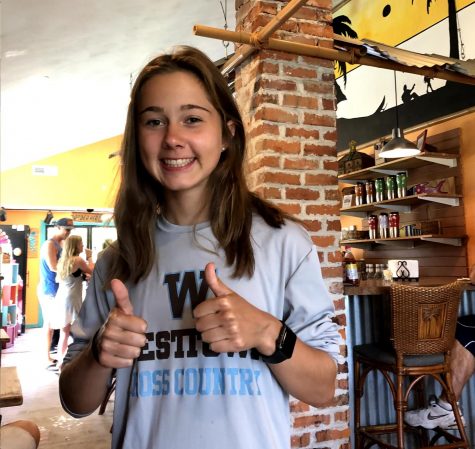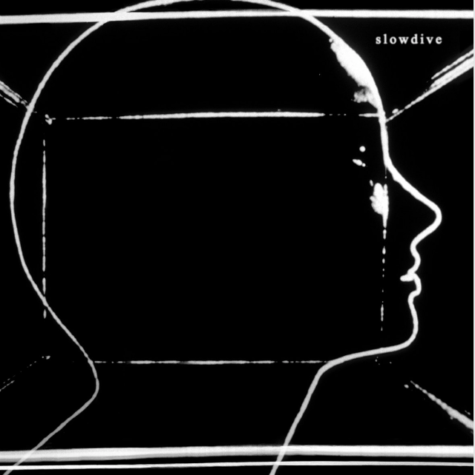Making Sense of Mitigation

Chris Benbow and Mariska Batavia
If you’re confused about the latest COVID-19 prevention strategies—from mask mandates to social distancing requirements—you’re not alone. Every week, it seems there is another update about what we can and cannot do when it comes to protecting ourselves and others against COVID. At Westtown, the Pandemic Support Team (PST) and Pandemic Programs and Operations group (PPO) have been working hard to keep our community safe by establishing guidelines that are based on science while also keeping an eye on changing government recommendations. I spoke with T. Chris Benbow and fellow PST member T. Mariska Batavia about Westtown’s COVID mitigation efforts. A member of both the PST and PPO, T. Chris explained the roles of these two groups.
“The PST does not set policy, but basically makes recommendations to the PPO, which is a different group that is setting the policy. In addition to making recommendations to the PPO, the PST will do things like share educational information with the community, answer clarifying questions, that sort of thing,” he explained. “I think we are trying to strike a balance between all sorts of different perspectives and recommendations, and trying to find a sweet spot, which is going to be different for everyone.”
To Mask or Not to Mask?
According to updated CDC guidelines, masks are no longer required for fully vaccinated people in public settings; however, the CDC is advising K-12 schools to continue with masking and physical distancing practices through the end of the current school year. It wasn’t that long ago when schools and businesses were encouraging double-masking. According to T. Chris, Westtown recommended (but did not require) double-masking when in-person classes and activities resumed after winter break—a time when “we were seeing the rise in numbers and an increase in variants all over the place.”
Whether single or double, the fit of the mask is critical, according to T. Mariska, who added that a good-fitting, single-layer mask has been “very effective as an intervention and helping to curb the spread.” Now that she is fully vaccinated, she has switched to a single mask, as her risk of infecting someone else or becoming infected herself are quite low. Westtown continues to follow the CDC’s prior recommendation that once a person is vaccinated, masking should continue.
Having a large part of the population vaccinated is not just about how many people are vaccinated, it’s about the fact that when a lot of people are vaccinated, the rates of COVID circulating in our wider community are probably going to be lower, and that will lead to an inherently lower risk of any one person possibly having it.
— T. Mariska Batavia
T. Mariska said she’s less worried about the possibility that a vaccinated individual could get infected with COVID and spread that infection to others. She also pointed out that new data suggests that the vaccines work well against all known variants. She is concerned, however, that it will be hard to know who in the community is vaccinated and who isn’t. These are important considerations going forward, especially with the lifting of restrictions. “If we keep changing the masking rules, we may have to change that back again,” she explained. I feel like we are at a point where masking doesn’t feel that obtrusive to most people anymore, and it’s smart just to keep masking—it’s just another layer of protection.
Social Distancing: How Much is Just Right?
While the CDC no longer recommends physical distancing for fully vaccinated individuals, the organization first started to ease up on social distancing guidelines in schools following a March 2021 study published in Clinical Infectious Diseases, which showed no significant difference in COVID-19 case rates between schools using three-feet versus six-feet social distancing policies. Despite these findings, Westtown has maintained the six-feet policy.
“There was a moment when the CDC recognized that the six-feet threshold is really preventing a lot of schools from opening fully because there are classrooms that don’t physically have space for everyone to be in there if we say six feet, so the CDC said if you can’t do six, three is okay,” T. Mariska said. “There was a study that came out showing no significant difference. It was a small study, it was a flawed study, but it did show that in districts that had three-feet as compared to six-feet requirements, there did not seem to be significant differences between the rates of transmission.” At Westtown, our unique campus has shaped decisions about physical distancing.
“I think what we’ve got to understand is that at Westtown, we are not space constrained in that way. We are not in a position where we have to tell anybody, ‘You cannot come to school because we don’t have enough space to be six feet apart.’ I think we would be thinking really differently if we were in that position, but we are not,” she explained. “Having said that, I do think we are in a position now with warm weather and more things being outside, with mask compliance being fairly good, people getting tested regularly, and a lot of people getting vaccinated recently, we are going to be in a place where we can start to look at that distancing requirement and perhaps relaxing it at some point in the near future, probably not down to nothing but probably down to three feet.”
For now, when inside classrooms and other enclosed spaces, she said it’s best to maintain some form of physical distancing. “I personally would continue to keep as much distance as possible because more is still going to be better. It’s still decreasing your risk and the risk of other people, so if there is space to be distanced, it’s still smart to distance yourself,” she explained. She added that the risk of transmission outside is very low.
Eating: Restrictions Still In Place for Now
Students can’t wait until they’ll be able to ditch their masks for good around mealtime, but for now, Westtown’s recommendation to mask up and maintain distance during snacks and meals (when not eating) will stay in place until more community members are vaccinated.
“Because [eating] is a time when you have to be unmasked, it’s inherently a higher risk time,” said T. Mariska. “So we’ve said we want people to be outside to the greatest extent possible and we want people [who are eating] not to be talking to each other to the greatest extent possible. If they are going to be talking to each other, they need to be spaced out. I think that really is going to need to stay in place until a huge proportion of our population is vaccinated.”
I’m optimistic that by the fall or at least early in the fall we might have something like the vast majority of our middle and upper school students vaccinated. That would be really exciting and could be a game changer of sorts.
— T. Chris Benbow
Vaccinations: Hope For a Better Future
The widespread accessibility of vaccines is changing the way we think about COVID. On May 17, the FDA permitted the use of the Pfizer-BioNTech vaccine for adolescents ages 12 to 15. According to T. Mariska, “Having a large part of the population vaccinated is not just about how many people are vaccinated, it’s about the fact that when a lot of people are vaccinated, the rates of COVID circulating in our wider community are probably going to be lower, and that will lead to an inherently lower risk of any one person possibly having it.”
Earlier this spring, COVID transmission levels were very high—30 cases per 1,000 people in Chester County, PA, in late April. “If everyone is vaccinated, including teenagers, that number is going to be way lower,” she said. “So if we are in a place where there are five new cases per day in our county, and most of our population is vaccinated, does that change the risk calculus of letting people sit together and chat while they eat? It definitely does!”
Right now, there are no plans to require COVID vaccines for Westtown’s 2021-2022 school year. T. Chris said that even if a vaccine was required by either the school or the state, there would still be medical and religious exemptions, making the idea of protection for everybody a bit misleading. However, he said he’s a “strong believer in the efficacy of vaccines, and would really like as many of us as possible to be vaccinated.”
“As we look ahead to the fall … I think it’s really hard to know what percentage of our community is going to be vaccinated. I’m optimistic that by the fall or at least early in the fall we might have something like the vast majority of our middle and upper school students vaccinated. That would be really exciting and could be a game changer of sorts.”
Mariska pointed out that unlike higher education institutions, the nature of Westtown’s K through 12 population may make it difficult to mandate vaccinations for students, who are mostly minors. “Even if a lot of colleges, universities, and businesses start mandating [vaccines], I’m not sure if Westtown ever would. But I also do think that they are going to be guided by what other schools like Westtown are doing.”
She understands that students might feel frustrated that as a boarding school, Westtown has more restrictions than most day schools. “One thing that I hope students can at some point appreciate is that because a residential environment is inherently a higher risk environment, we do have to be a little bit more careful.”
When asked about possible breakthrough cases in vaccinated community members, T. Mariska said she is more concerned with controllable factors, such as proper ventilation. She referred to our strategies of masking, distancing, and ventilation as a “safety net” if vaccination should fail. However, as more people get vaccinated, T. Mariska said we may be at a vulnerable moment in that people might feel overly confident before they are fully vaccinated, which is not until two weeks after their second COVID vaccine (or two weeks after a one-dose vaccine) .
Since overconfidence may lead to unintentional exposure, students want to know whether Westtown’s isolation and quarantining process will change. According to T. Mariska, our protocols are mainly dictated by the Chester County Health Department, and, for the time being, they are not changing. She said that science supports the 14-day quarantine rule for the Westtown community, even though technically the CDC allows for exceptions.
Looking Ahead
Chris acknowledged the many “if’s” that Westtown is facing, especially when it comes to balancing COVID guidelines with building community and avoiding some of the “costs of isolation.” Despite lingering restrictions, he feels that Westtown students are definitely trying hard to both understand and be receptive to Westtown’s mitigation strategies.
“I think there’s a basic understanding that we think certain things are important,” he said. “I think the detailed understanding of why is where it sometimes gets a little bit shaky for some folks.”
He also acknowledged that many students may be “sick and tired” of COVID rules and regulations. “They’re frustrated. Some of them don’t think it’s that big of a deal, but some are deeply anxious about what a big deal it does feel like, and either of those extremes can make it harder for people to feel receptive to more restrictions or just plain changing landscapes.”
Mariska agrees that it’s been frustrating at times, but as new information surfaces regarding vaccinations, distancing, and masking, both she and T. Chris, along with the rest of the PST and PPO members, will continue to strive for a balance between the safety of our community and realistic expectations for students.

On any given day, you can find Steph running down random side streets throughout her beloved hometown of West Chester, PA, or in endless circles around...









